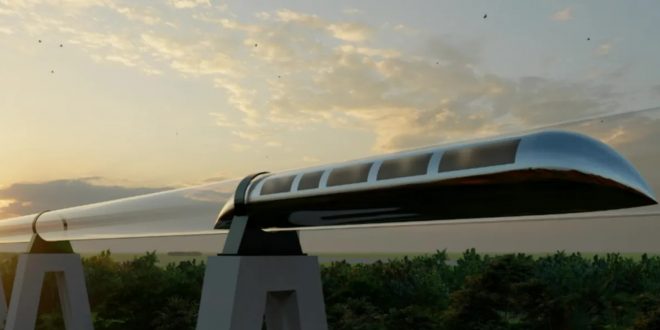The maglev train, developed by China as an alternative to the Hyperloop, has just surpassed its previous speed record by reaching speeds of 623 kilometers (387 miles) per hour during a test run on a full-scale track.
The China Aerospace Science and Industry Corporation (CASIC), a state-owned aerospace business, is overseeing the execution of the project. CASIC specializes in the production of a wide range of aerospace products, including rockets, missiles, satellites, and spacecraft.
The train achieved an unprecedented velocity of 623 kilometers (387 miles) per hour during a test run in 2023, conducted without the need for a vacuum environment. According to the South China Morning Post, CASIC asserts that recent tests have exceeded the previous record. The precise velocity is now being kept confidential.
In addition, the test was conducted in a low-vacuum tube, demonstrating the successful functionality of the maglev technology. The high-speed rail system achieved a new speed record during a test run on a 2-kilometer (1.2-mile) track in the city of Datong, located in the northern province of Shanxi, China.
The vehicle utilizes maglev technology, which employs magnets to push the train in a forward direction and also to suspend it above the rails, so minimizing friction. In order to enhance its velocity, the train traverses a specifically engineered low-vacuum tunnel that minimizes air resistance.
The pace of technological advancement is astonishing. In October 2022, CASIC achieved a train test run with a maximum speed of 130 kilometers (81 miles) per hour. The most recent endeavor exceeds that velocity by more than fourfold.
Prior to CASIC’s achievement, the highest speed ever reached by a hyperloop was 463 kilometers (288 miles) per hour, accomplished by a group of engineers from the Technical University of Munich in July 2019.
In 2018, there were a total of six operational maglev train systems worldwide, including three in China, two in South Korea, and one in Japan. These trains operate in an exposed environment, in contrast to those that use low-pressure tunnels called hyperloops.
Although maglev trains may achieve remarkable velocities, they come with a hefty price tag. Additionally, they use substantial quantities of energy and have specialized infrastructure that poses challenges when integrating into preexisting transportation networks.
Outside of China, Hyperloop One, the business responsible for a future transportation system formerly promoted by Elon Musk, ceased operations at the end of last year.
The aspiration for hyperloop technology is undeniably alive. Discussions have arisen about the implementation of a commercial hyperloop system in Italy, which would establish a connection between Venice-Mestre and Padua in a duration of under 15 minutes. It is important to note that the current duration of the train ride between Mestre and Padova is around 14 minutes.
 Tech Gadget Central Latest Tech News and Reviews
Tech Gadget Central Latest Tech News and Reviews




